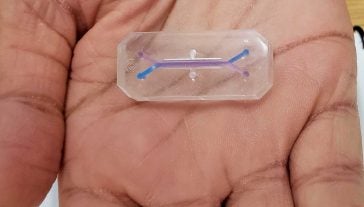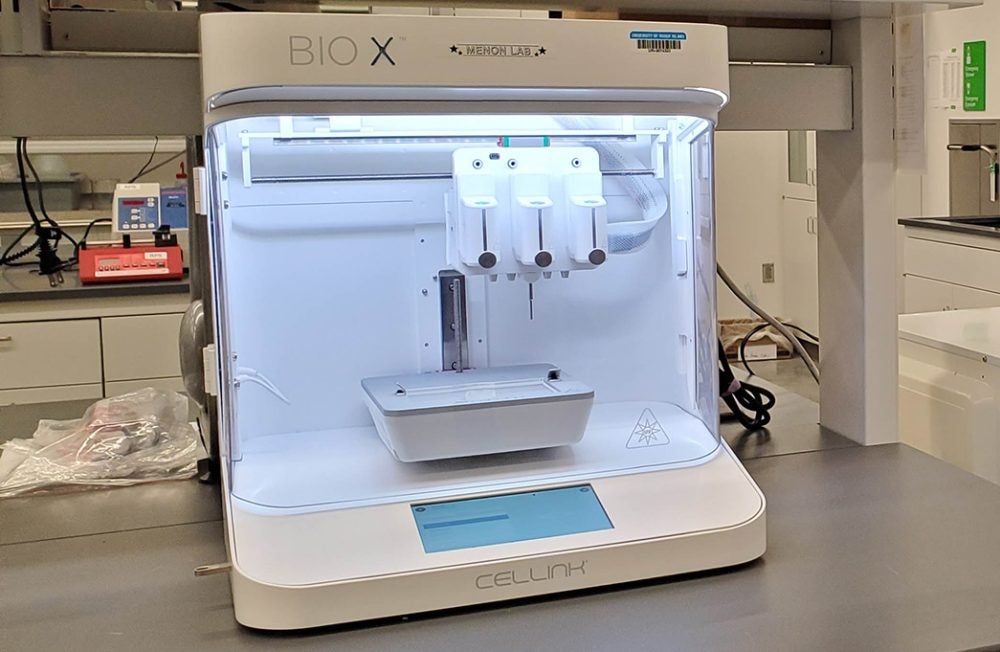- Assistant Professor, dual appointment Chemical Engineering / Biomedical and Pharmaceutical Sciences
- Joined URI faculty in 2017
- Joined College of Engineering faculty in 2021
Which research topics are you most interested in?
I’m interested in learning how we can deliver therapies to the lungs in a manner in which they remain in the lungs for a long period of time without being cleared. The lungs have a hostile environment which is constantly involved in eliminating foreign objects. We’ve been delivering inhalable nanoparticles that we coat with certain biomimetic materials that prevent them from being recognized so that they can remain in the lungs longer and provide therapy for a longer period of time.

I would also like to see if there’s a better way to mimic conditions in the lungs in a laboratory setting. We have cells growing in a petri dish as two-dimensional single layers of cells. We use these single layers of cells to test different types of therapies and nanoparticles. But within our bodies, we don’t see cells as a single flat layer, we see them as complex organs and tissues. So, we’re trying to develop three-dimensional organs and tissues that can be used for testing different therapies and nanoparticles.
More specifically, our focus is on lung diseases. Therefore, we’re trying to mimic lung cancer or lung inflammation in a three-dimensional arrangement to predict how the diseases would respond to different types of therapies.

What exciting technology do you use in your lab?
We have two types of 3D printers in the lab. One can print tissues and organs by feeding in different types of cells and solutions. We also have a photolithography printer. By putting materials on a stage and applying ultraviolet light, we can shape it in a way we want it.
We also work with organ chips. By growing cells in one of two channels, we can introduce fluid flow to mimic how blood flows through the body. If we’re doing a lung on a chip, we can mimic how a lung expands and contracts.
Some of our current projects are on pulmonary fibrosis, a lung disease that occurs when lung tissue becomes damaged and scarred. We’re working toward mimicking the disease in the lab to see how different therapies could treat that condition.
Why did you join the faculty of the College of Engineering?
Although I have a full appointment in the College of Pharmacy, I am a biomedical engineer by training. So I was very interested in the collaborative research opportunities where pharmaceutical science and chemical engineering overlap. I can see myself working with some of the other chemical engineering faculty on developing complex solutions for treating different diseases or producing better engineered products that can be used for testing therapies.
What do you like to do when you’re not working?
I like to dabble in a few interests. I like to read fiction, I like to write and recently I’ve been getting into painting.
